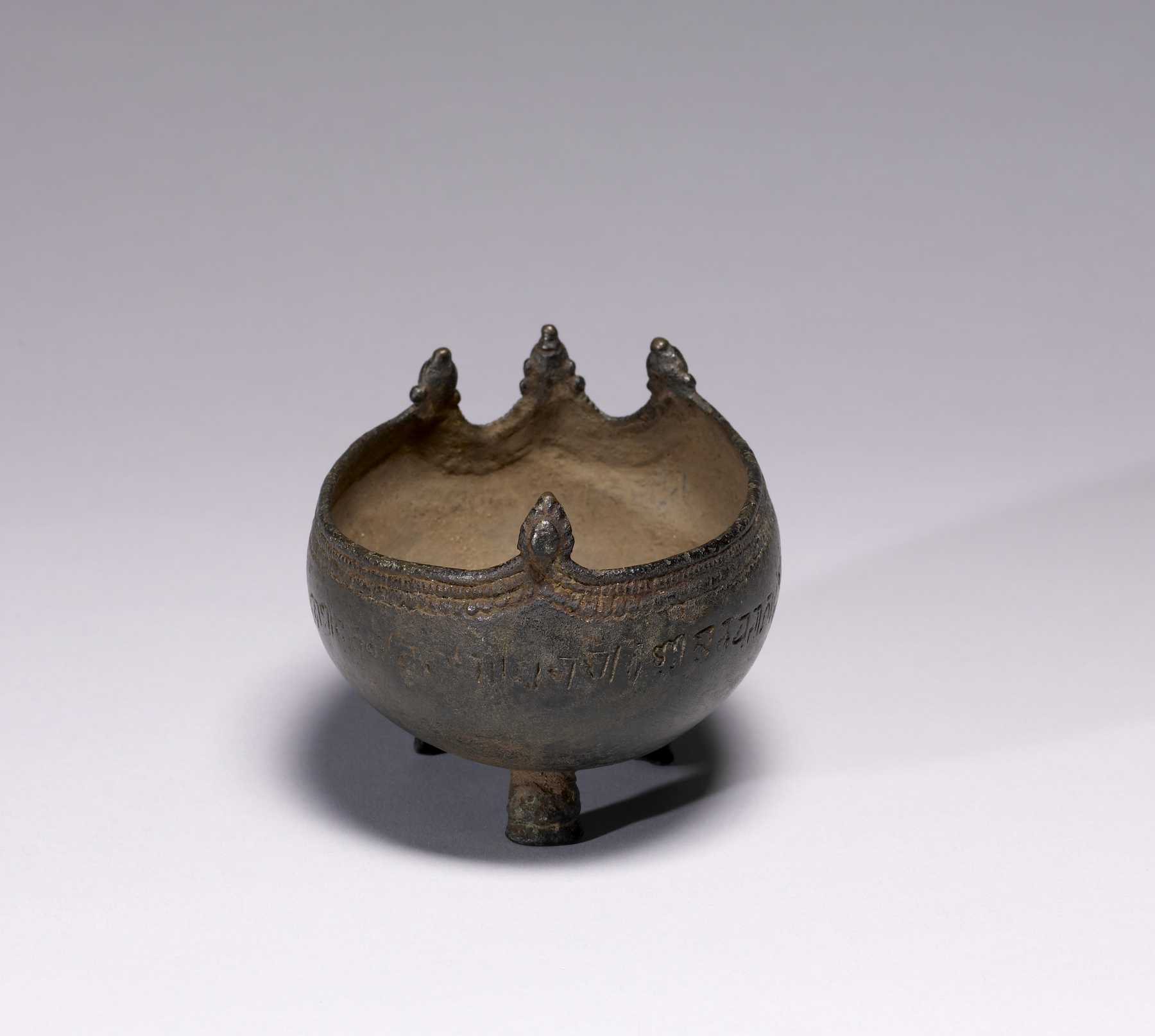Vessel in the Form of a Skull Cup
(India, Nepal, and Tibet)
Shaped like the upper portion of a human skull, this metal vessel was made for tantric Buddhist rituals involving the use of a skull cup to prepare and consume a sacred liquid identified with the nectar of enlightened bliss. Three feet in the form of skulls support the vessel; they relate to the imagery visualized during the preparation of the nectar, in which the cup sits upon a triangular fire with a head at each corner. Three more heads mark the rim of the vessel, a Newar convention. A Nepalese inscription around the body of the cup records its consecration in the year Samvat 524 (1404 C.E.) in honor Chakrasamvara, a wrathful male deity who would be invoked during the cup’s ritual use.
Inscription
Provenance
Provenance (from the French provenir, 'to come from/forth') is the chronology of the ownership, custody, or location of a historical object. Learn more about provenance at the Walters.
Acquired by Ian Alsop; purchased by John and Berthe Ford, Baltimore, June 10 1970; given to Walters Art Museum, 2016.
Exhibitions
| 2016-2017 | Ferocious Beauty: Wrathful Deities from Tibet and Nepal. |
Geographies
Nepal (Place of Origin)
Measurements
H: 3 1/16 × W: 5 1/16 × D: 3 9/16 in. (7.8 × 12.8 × 9.1 cm)
Credit Line
Gift of John and Berthe Ford, 2016
Accession Number
In libraries, galleries, museums, and archives, an accession number is a unique identifier assigned to each object in the collection.
In libraries, galleries, museums, and archives, an accession number is a unique identifier assigned to each object in the collection.
54.3107










